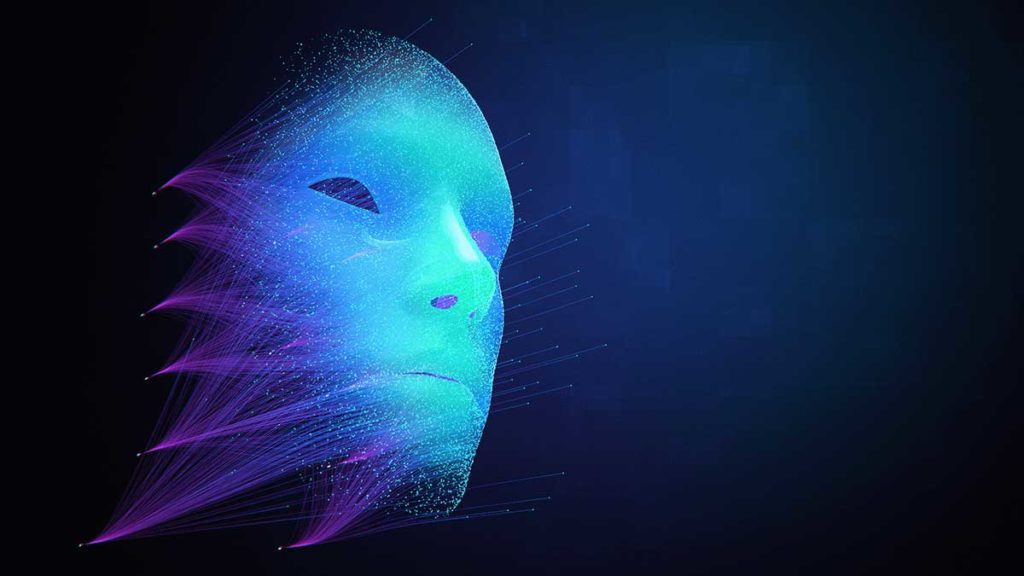
The annual World Economic Forum took place in Davos Switzerland this week, where a computer scientist – Professor Li, show cased his deepfake installation. Much the same as other deepfake installation software, his creates computer-manipulated videos of other people – mainly people in the spotlight like politicians or celebrities – that are intended to look real.
This process usually involves the idea of ‘face swapping’ – where the face of a celebrity is transferred on to the likeness of someone else.
The software showcased the faces of actor Leonardo DiCaprio, footballer Lionel Messi and other large global names onto the image of other faces – in real time. Their features and expressions were able to merge seamlessly with the underlying image.
Notably, the effects are impressive but, take on a somewhat comical and suspicious edge. They could certainly confuse the less tech savvy among us. Professor Li, responsible for developing the software, then went on to show a new video he had been working on – where a world leader gave a speech that was impossible to distinguish from the real thing.
Deepfakes only became mainstream to the public circa 2017, after distasteful images started to emerge online, which typically involved the face swapping or image manipulation of celebrities. Some were copies of well-known people, voiced by impressionists or comedians. In the main, they were celebrities faces superimposed on to nude images, much to the surprise and concern of those who were targeted.
The technology itself depends on complex machine learning algorithms and has rapidly developed in recent years, enabling deepfakes to become more common. Some have been used to fuel the ‘fake news’ frenzy, for example the video of US House Speaker Nancy Pelosi, making her come across as confused and incoherent. Others have been mentioned in online fraud cases. Social media giants such as Facebook and Instagram have removed them from their platforms for worries that they could be used in manipulative ways.
According to Professor Li, his software was not designed or intended to fool people and will be sold exclusively to businesses. However, he is of the opinion that, ‘A dangerous genie’ could be about to escape its bottle, as deepfake technology falls into the wrong hands – and democracy is at threat. “The first risk is that people are already using the fact deepfakes exist to discredit genuine video evidence. Even though there’s footage of you doing or saying something, you can say it was a deepfake and it’s very hard to prove otherwise.”
This is a ploy now being used by politicians around the world. There is one particular case of Joao Doria, the governor of Sao Paulo in Brazil. In 2018, a video was circulated which saw rise to accusations of him having an extra-marital affair. He claimed the video was a deepfake and no one has been able to prove that it isn’t.
There is a worry that as deepfake installation software develop, so does the potential in which they can be used for misinformation. Elections are already being manipulated with fake news, imagine the problems deepfakes could bring to the table.
Currently, clips like the one of Nancy Pelosi are easy to spot, but should this be done more effectively, people could start adding voice overs to the mouths of politicians. By the time it is realized, it could be too late to correct.
Despite these worries, Dutch cyber security firm Deeptrace, are positive and feel the panic over deepfakes has subsided.
Their director Giorgio Patrini, says it is fairly simple to pull off a realistic deepfake when the person being replicated is someone we don’t know. However, if they are a politician or celebrity familiar to millions, it’s much harder. “People are just too familiar with their voices and facial expressions. You would also need to be able to impersonate their voice and make them say things they would credibly say, which limits what you can do.”
Furthermore, whilst deepfake installation tools are freely available in open source on the internet, they still require substantial skill and expertise to use. However this could become something that improves with time as it becomes more accessible to the public.
Nevertheless, Mr. Patrini is of the opinion that indistinguishable deepfakes will become commonplace eventually and could be used as a serious political weapon.
Giving an insight as to what this might look like, Facebook recently, removed an entire network of more than 900 fake accounts from platforms that allegedly used deceptive practices to promote hate speech online. The accounts had used fake profile photos of fake faces generated using artificial intelligence.
There is a lot of software and tools available out there, to detect deepfake accounts and methods however like most aspects of online crime, cyber criminals will work tirelessly to combat them.
However, Mr. Patrini is optimistic: “Even when deepfakes are so sophisticated humans cannot tell the difference, I believe we will be able to build more sophisticated tools to spot them. It’s like anti-virus software – it will keep being updated and improved.”